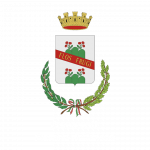A unique drink
The ancient custom of vinifying apples, widespread in the Modena Apennines and now almost forgotten, is revived in our area.
The careful selection of the most suitable varieties for cider-making, depending on the production method, creates a variegated product with a unique and characteristic taste.
A sparkling, low-alcohol beverage that expresses the scents and flavours of fruits cultivated with passion by those who have decided to keep the traditions of the land alive.
And from tradition to innovation… discover pear cider too!









